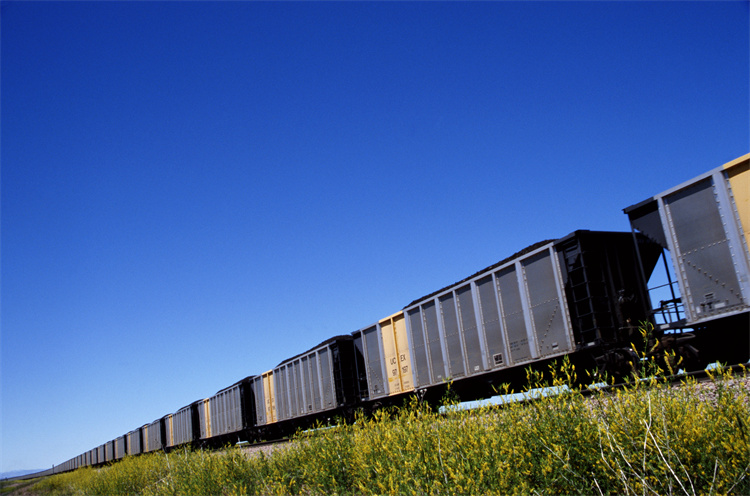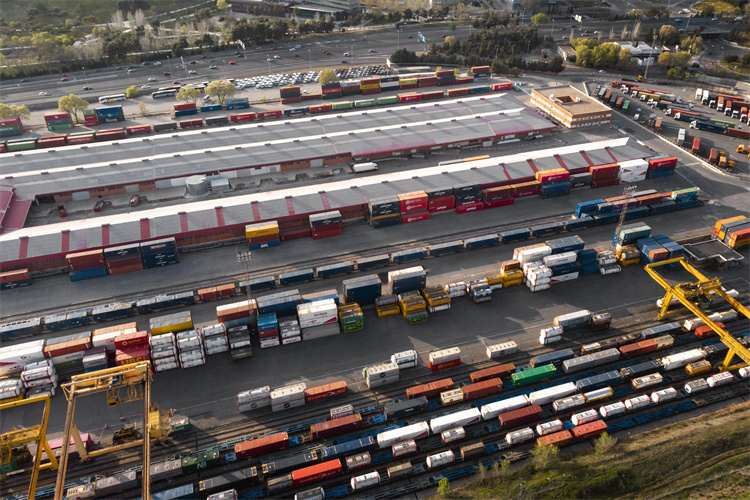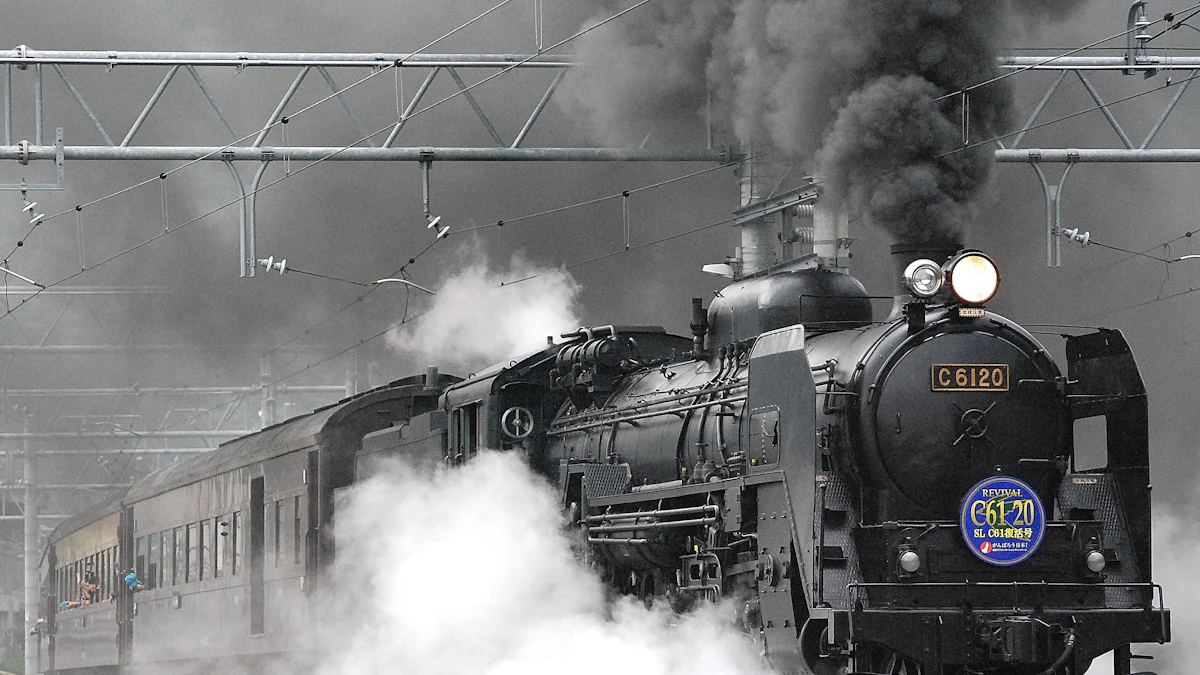How European Railways Shaped Modern Transportation

The European railway has profoundly transformed transportation, reshaping how societies connect and economies thrive. Its origins trace back to the early 19th century, when innovations like George Stephenson's Locomotion in 1825 introduced the first steam locomotive on a public railway. This breakthrough sparked a revolution, enabling faster and more affordable movement of goods and people. Over time, railways became the backbone of industrial growth, urbanization, and cross-border trade. Today, European modern railways continue to lead the way with cutting-edge technologies, setting benchmarks for sustainability and efficiency in global transportation.
The Historical Foundations of European Railroads

The Dawn of Rail Travel
The origins of railroads in Europe marked a pivotal moment in transportation history. The Stockton and Darlington Railway, inaugurated in 1825, became the world’s first public railway to use steam locomotives. This groundbreaking achievement connected coal mines near Shildon to the port of Stockton-on-Tees, revolutionizing the movement of goods. It demonstrated the immense potential of rail transport, laying the foundation for future railway development.
Early European railroads quickly gained traction as nations recognized their transformative power. Steam-driven locomotives offered unprecedented speed and efficiency compared to traditional horse-drawn carriages. By the mid-19th century, railroads had begun to reshape societies, enabling faster travel and reducing transportation costs. This innovation not only improved the mobility of people but also facilitated the rapid distribution of goods, fueling industrial growth.
Railroad history during this period also highlighted the ingenuity of engineers and visionaries. Figures like George Stephenson, often referred to as the "Father of Railways," played a crucial role in advancing locomotive technology. His work on the Stockton and Darlington Railway and subsequent projects set the stage for the widespread adoption of rail systems across Europe. These early efforts underscored the importance of railroads in connecting towns, fostering economic activity, and transforming daily life.
The Expansion of Rail Networks During the Industrial Revolution
The industrial revolution served as a catalyst for the rapid expansion of rail networks throughout Europe. Railways became essential infrastructure, linking major cities and industrial hubs. This connectivity spurred economic growth by enabling the efficient transportation of raw materials like coal and steel, which were vital to industrial production. Factories could now access resources more easily, while finished goods reached markets faster than ever before.
The construction of railways also created a ripple effect across various industries. The demand for steel rails and locomotives boosted the steel industry, while coal mining experienced a surge to fuel steam engines. These developments generated employment opportunities, transforming local economies and accelerating urbanization. Towns and cities along railway lines flourished as they became centers of commerce and industry.
Railway development during this era also had profound social implications. Affordable and accessible rail travel allowed people to move between regions with greater ease. This mobility fostered cultural exchange and strengthened social cohesion. Traditional modes of transport, such as canals and stagecoaches, gradually declined as railroads proved to be faster and more reliable.
By the late 19th century, Europe boasted an extensive railway network that connected its major cities. Countries like Britain, Germany, and France led the way in railway construction, setting benchmarks for other nations. The integration of rail systems across borders further enhanced trade and cooperation, laying the groundwork for a more interconnected continent. The expansion of railroads during this period not only transformed transportation but also played a pivotal role in shaping modern Europe.
Technological Advancements in European Modern Railways

The Transition from Steam to Diesel and Electric Trains
The evolution of European railways began with the transition from steam-powered locomotives to diesel and electric trains. Steam engines, while revolutionary in their time, required significant resources like coal and water, making them less efficient and environmentally sustainable. By the mid-20th century, diesel engines emerged as a more practical alternative. These engines offered greater reliability and reduced operational costs, which allowed railways to expand their services and improve efficiency.
Electric trains soon followed, marking a pivotal shift in railway technology. Electrification transformed rail networks across Europe, enabling faster speeds and smoother operations. Countries like Switzerland and Germany led the way in adopting electric rail systems, which significantly reduced greenhouse gas emissions. This focus on decarbonization and energy efficiency set European modern railways apart from other regions, where freight transport often took precedence over passenger services. Today, electrified railways dominate the continent, reflecting Europe’s commitment to sustainable transportation.
The integration of electric trains also improved passenger experiences. Quieter operations, reduced travel times, and enhanced reliability became hallmarks of European passenger train timetables. These advancements not only modernized rail systems but also reinforced railways as a preferred mode of travel for millions.
The Rise of High-Speed Rail
High-speed rail networks represent one of the most significant advancements in railway technology. Europe pioneered this innovation with the launch of Japan’s Shinkansen inspiring the French TGV (Train à Grande Vitesse) in 1981. The TGV set new standards for speed and efficiency, reaching speeds of up to 200 mph (320 km/h). Other countries, including Spain, Italy, and Germany, quickly followed suit, creating an interconnected web of high-speed rail networks across the continent.
These networks revolutionized passenger transport by rail, offering a competitive alternative to air travel for medium-distance journeys. High-speed trains drastically reduced travel times between major cities. For example, the Eurostar connects London to Paris in just over two hours, making cross-border travel seamless and efficient. This connectivity has strengthened economic ties and cultural exchange across Europe.
Digital solutions further enhanced the appeal of high-speed rail. Features like e-ticketing and real-time updates streamlined the travel experience, while yield management systems optimized ticket pricing. These innovations ensured that high-speed rail remained accessible and competitive, solidifying its role as a cornerstone of European modern railways.
Innovations Shaping the Future: Maglev and Hyperloop
The future of European railways lies in groundbreaking technologies like Maglev (magnetic levitation) and Hyperloop systems. Maglev trains, which use magnetic forces to lift and propel vehicles, eliminate friction and achieve speeds exceeding 300 mph (500 km/h). Germany and China have spearheaded Maglev development, with Europe exploring its potential for ultra-fast and energy-efficient travel.
Hyperloop technology, still in its experimental phase, promises to revolutionize transportation further. This system involves passenger pods traveling through vacuum-sealed tubes at speeds of up to 760 mph (1,220 km/h). European innovators are actively researching Hyperloop’s feasibility, focusing on its integration into existing rail infrastructure. These advancements align with Europe’s emphasis on sustainability, as both Maglev and Hyperloop systems aim to minimize energy consumption and environmental impact.
In addition to speed, future rail systems prioritize resilience and adaptability. Designs now incorporate extreme hazard resistance and modular station concepts, ensuring that railways remain functional during natural disasters or other emergencies. The integration of smart grids and circular economy principles further underscores Europe’s commitment to sustainable innovation. These technologies position European modern railways as global leaders in shaping the future of transportation.
Societal and Economic Impacts of European Railroads
Urbanization and City Development
European railroads played a pivotal role in shaping urban landscapes and fostering city development. The establishment of railway stations often transformed small towns into bustling urban centers. These stations became hubs of activity, attracting businesses, industries, and residents. Cities like Manchester, Berlin, and Lyon experienced rapid growth as railways connected them to regional and international markets.
Railway infrastructure encouraged the expansion of cities beyond their historical cores. Suburban areas emerged as rail connections allowed people to live farther from their workplaces. This shift reduced overcrowding in city centers and improved living conditions for many. The accessibility provided by railways also influenced urban planning. Cities began to design neighborhoods and commercial districts around railway lines, ensuring efficient movement of people and goods.
The integration of railways into urban environments also spurred architectural innovation. Grand stations like London’s St. Pancras and Paris’s Gare du Nord became iconic landmarks, symbolizing progress and modernity. These structures not only served practical purposes but also reflected the cultural and economic significance of rail transport in urban development.
Trade, Industrialization, and Economic Growth
Railways revolutionized trade and industrial activity across Europe. By providing faster and more reliable transportation, they enabled industries to access raw materials and distribute finished products efficiently. Coal, steel, and textiles—key drivers of the industrial revolution—moved seamlessly across regions, fueling economic growth.
The connectivity offered by railways reduced transportation costs, making goods more affordable and accessible. Farmers could transport perishable products like dairy and produce to urban markets, expanding their reach and profitability. Similarly, manufacturers gained access to broader consumer bases, boosting production and innovation.
Railway construction itself created significant economic opportunities. The demand for steel rails, locomotives, and labor stimulated industries and generated employment. Regions with extensive railway networks, such as the Ruhr Valley in Germany, became industrial powerhouses. The ripple effects of railway development extended to banking and finance, as investments in railway projects drove economic expansion.
Cross-border rail connections further enhanced trade by linking European nations. These connections facilitated the exchange of goods, ideas, and technologies, fostering economic cooperation. The integration of railways into the European economy laid the groundwork for the continent’s industrial dominance in the 19th and early 20th centuries.
Cultural Exchange and the Rise of Rail Tourism
Railways not only transformed economies but also enriched cultural experiences. The ease of travel brought by rail connections allowed people to explore new regions and cultures. Destinations that were once remote became accessible, sparking the rise of rail tourism. Travelers could visit historic cities, scenic countryside, and coastal resorts with unprecedented convenience.
The advent of rail tourism popularized iconic routes like the Orient Express, which connected Paris to Istanbul. These journeys offered passengers a blend of luxury and adventure, showcasing the cultural diversity of Europe. Railways also played a role in promoting national heritage. Historic sites, museums, and festivals became more accessible, encouraging cultural preservation and appreciation.
Rail connections fostered interpersonal and cultural exchanges. People from different regions interacted more frequently, sharing traditions, languages, and cuisines. This exchange enriched European societies, creating a sense of shared identity and unity. The role of railways in cultural integration remains evident today, as they continue to connect people and places across the continent.
Modern Trends in European Modern Railways
Sustainability and Green Initiatives
The European railway sector has embraced sustainability as a core principle, driving efforts to reduce environmental impact. Rail systems now prioritize energy efficiency, with innovations targeting both rolling stock and infrastructure. For example, modern trains incorporate regenerative braking systems that recover and reuse energy during operation. Electrification of rail lines has also expanded, significantly reducing reliance on fossil fuels. Countries like Switzerland and the Netherlands lead in operating nearly fully electrified networks, setting benchmarks for others.
Projects such as FP4-RAIL4EARTH exemplify Europe’s commitment to green initiatives. This program focuses on mitigating climate change, adapting rail systems to environmental challenges, and transitioning to a circular economy. By integrating scientific and technical solutions, it aims to create a greener and smarter rail system. Additionally, the sector has explored alternative energy sources, including hydrogen-powered trains, which Germany has already deployed on select routes.
Efforts to reduce energy consumption extend beyond trains. Rail infrastructure now incorporates energy-efficient lighting, smart grids, and renewable energy sources like solar panels at stations. These measures not only lower operational costs but also align with Europe’s broader climate goals. The railway industry’s focus on sustainability positions it as a leader in eco-friendly transportation, offering a viable alternative to road and air travel.
Digital Transformation in Rail Systems
Digitalization has revolutionized the modern railway system, enhancing efficiency, safety, and passenger experience. Advanced technologies like the European Rail Traffic Management System (ERTMS) have standardized signaling and communication across the continent. This system improves interoperability within the European rail network, ensuring seamless operations across borders.
Smart ticketing solutions have simplified travel for passengers. Features like mobile apps and contactless payment systems eliminate the need for paper tickets, streamlining the boarding process. Real-time updates on train schedules and delays further enhance convenience, allowing travelers to plan their journeys more effectively. These innovations have made rail travel more attractive, contributing to a steady increase in passenger numbers.
Automation has also transformed freight transport by rail. Automated cargo handling systems and predictive maintenance technologies optimize logistics, reducing downtime and costs. Rail operators now use data analytics to monitor track conditions and train performance, ensuring timely repairs and minimizing disruptions. These advancements reflect the sector’s commitment to modernisation, keeping pace with evolving technological demands.
Cross-Border Connectivity and European Unity
The expansion of cross-border rail connections has strengthened Europe’s unity, fostering economic and cultural integration. High-speed rail networks like the Eurostar and Thalys connect major cities across countries, enabling swift and efficient international train connections. These services provide a competitive alternative to short-haul flights, reducing carbon emissions while promoting regional cooperation.
The construction of railways linking Eastern and Western Europe has bridged historical divides. Investments in infrastructure have improved accessibility, allowing passengers and goods to move seamlessly across borders. Initiatives like the Trans-European Transport Network (TEN-T) aim to create a unified rail system, enhancing connectivity between member states.
Freight transport by rail has also benefited from cross-border collaboration. Harmonized regulations and streamlined customs procedures have facilitated the movement of goods, boosting trade and economic growth. Rail corridors such as the Rhine-Alpine Corridor exemplify the potential of integrated networks to support sustainable logistics.
By prioritizing connectivity, the European rail network has become a symbol of unity and progress. It not only strengthens economic ties but also promotes cultural exchange, reinforcing the continent’s shared identity.
Lessons from European Railroads for Global Transportation
Global Influence of European Innovations
The evolution of railway transportation in Europe has left an indelible mark on global transit systems. European railroads pioneered advancements that have been adopted and adapted worldwide, setting benchmarks for efficiency, speed, and sustainability. High-speed rail, a hallmark of European innovation, has inspired similar systems in countries like Japan, China, and the United States. The French TGV and Germany’s ICE trains demonstrated how rail could compete with air travel, offering faster, eco-friendly alternatives for medium-distance journeys.
The electrification of rail networks, which began in Europe, also influenced global railway development. Nations across Asia and South America have followed Europe’s lead in reducing reliance on diesel-powered trains. This shift not only improved energy efficiency but also aligned with global efforts to combat climate change. The integration of advanced signaling systems, such as the European Rail Traffic Management System (ERTMS), further showcased Europe’s leadership. By standardizing communication and safety protocols, ERTMS became a model for interoperability in international rail systems.
European railways also popularized the concept of cross-border connectivity. The seamless integration of networks like the Eurostar and Thalys proved that rail could transcend national boundaries, fostering economic and cultural exchange. This approach has inspired regions like Southeast Asia and Africa to explore transnational rail corridors, aiming to replicate Europe’s success in uniting diverse territories through rail infrastructure.
Robin Loos, a mobility expert, emphasized the importance of Europe’s influence on global rail systems:
“Ambitious political measures and masterplans for rail can restore the railways to their former glory and beyond. Europe’s innovations serve as a blueprint for global transportation.”
The global adoption of European railway practices underscores the continent’s role as a trailblazer in modern transportation. By prioritizing sustainability, efficiency, and connectivity, Europe has set a standard that continues to shape the future of rail worldwide.
Challenges and Opportunities in Modernizing Railways
Modernizing railways presents both significant challenges and transformative opportunities. Aging infrastructure remains a critical issue, particularly in regions where rail systems were established during the 19th century. Many tracks, bridges, and stations require extensive upgrades to meet contemporary safety and efficiency standards. The cost of these renovations often poses a barrier, especially for countries with limited budgets.
Technological integration also presents hurdles. While Europe has embraced digital solutions like smart ticketing and predictive maintenance, many global rail systems struggle to adopt similar innovations. The lack of standardized technology across borders complicates efforts to modernize. For example, implementing systems like ERTMS requires substantial investment and coordination among multiple stakeholders.
Despite these challenges, opportunities abound. The growing demand for sustainable transportation positions rail as a key player in reducing carbon emissions. Hydrogen-powered trains, already operational in Germany, offer a glimpse into the future of eco-friendly rail travel. These trains provide a viable alternative for non-electrified routes, showcasing the potential for innovation to overcome environmental challenges.
Cross-border collaboration also holds promise. Initiatives like the Trans-European Transport Network (TEN-T) demonstrate how unified rail systems can enhance connectivity and economic growth. Similar projects in other regions could replicate this success, fostering trade and cultural exchange on a global scale.
The rise of urbanization further amplifies the need for modern rail solutions. Expanding metro and commuter rail networks can alleviate traffic congestion and improve urban mobility. Cities worldwide can draw inspiration from Europe’s integration of rail into urban planning, where stations serve as hubs for economic activity and community development.
As Robin Loos noted, “The real salvation of the train will require ambitious measures. A masterplan for rail, rolled out over time, can address these challenges while unlocking the full potential of railways.”
By addressing these challenges head-on, the railway sector can seize opportunities to redefine global transportation. Modernization efforts, guided by Europe’s example, have the potential to create a more connected, sustainable, and efficient world.
European railroads have profoundly influenced modern transportation, shaping economies, societies, and technological progress. From their pivotal role in the Industrial Revolution to their continued evolution, railways have consistently driven economic growth and urban development. They revolutionized travel habits, connected regions, and fostered cultural exchange. Today, European railways lead the way in sustainability and innovation, offering a model for efficient and eco-friendly transit. As railway history continues to unfold, Europe’s commitment to modernization ensures its rail systems remain a global benchmark for connectivity and progress.
See Also
Get Prepared for the Transport Technology Revolution
Are You Prepared? Discovering New Transport Tech for Supply Chains
Affordable Transportation Management: Your Budget's Ally
Revolutionizing Efficiency with Smart Indigenous Transport Solutions
Comprehensive Guide to Eco-Friendly Supply Chain Transportation
